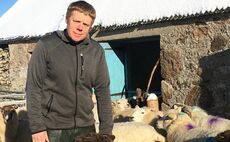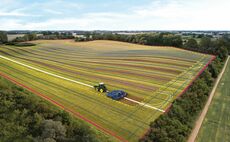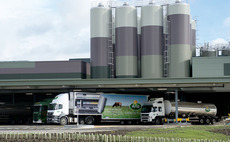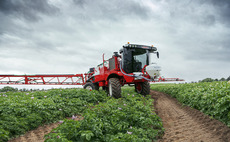The Semex International Dairy Conference, held in Glasgow, saw discussions on milk price prospects, the impact of food inflation and news of advancements in genetic indexes. Katie Jones reports.
Arriving on stage dressed as an undertaker and playing a tongue-in-cheek character mourning the demise of the recent high milk price, dairy analyst Chris Walkland could not offer delegates at this years Semex International Dairy Conference much in the way of positive news in terms of milk price.
While he gave a stark warning about what the future might hold, he also said there were huge positives within the industry.
Mr Walkland began by taking a look back at the magic and madness of 2022.
His figures showed 214 positive milk price moves and no price reductions last year.
But, as was widely predicted, the start of 2023 had marked the start of some change and Mr Walkland said it was time for the industry to get real.
He said: The biggest threat to the industry right now is not discretionary pricing or the large milk price cuts coming, because right now the gap between what you are being paid and what the processor is getting is the biggest I have ever seen.
As a consequence, the risk of a processor failing is as big as it has ever been.
He added there were no safety nets, as there were no co-operatives out there to pick up the stranded farmers.
He said: If a processor fails, it will be carnage.
But while Mr Walkland said the prospects were not looking good due to the bearish market, he said there were some stabilising factors which could help.
These included the possible impact a spring flush could have and the buoyant cull cow market.
The new pricing pledge announced by Muller at the end of last year could help stabilise prices, but this would be reliant on retailers holding their price on milk on the supermarket shelves and other liquid processors holding the line with Muller.
Despite his stark early warnings, Mr Walkland said there were huge positives, highlighting the organisation and communication of the industry.
He added the UK had strong co-operatives, good efficient producers, great products and a great story to tell.
Capitalise on changing consumer habits
Eating and shopping habits are changing, but there are ways the dairy industry can capitalise on it, according to Ian Shipton, consumer insight director at Kantar Worldpanel.
Mr Shipton said dairy products were seeing prices rise at some of the highest levels across all grocery products and, while there was no historical evidence to suggest inflation impacted on demand for dairy, the industry should not rest on its laurels.
He said there would be trade-offs to combat rising prices, including simplifying meals and cutting back on the number of ingredients used.
But dairy is a key category to many meal occasions. For example, for breakfast you almost always have to milk or yoghurt in some form and, for lunch, the humble sandwich using ingredients such as butter and cheese continues to dominate.
That is great news for dairy, as it means consumers are not cutting back on these ingredients, he said, adding dairy needed to protect its role by demonstrating its versatility.
While there is evidence to suggest we are buying less, what is more noticeable is we are buying cheaper.
The shift towards discounters was happening at an even faster rate for dairy products, but he warned against heavy price cutting.
Mr Shipton said: It does not have to be a race to the bottom on price.
Breeding low methane cows
Semex is launching a methane index on all tested females as part of its genomic test, Elevate.
This index, the company says, will allow dairy farmers to factor methane into their breeding policy and move it much faster to a lower methane herd.
Speaking at the conference, Dr Micheal Lohuis, Semex vice-president of research and innovation, said the announcement of this new index followed years of research looking into a genetic solution for methane emissions.
He said: We know that genetics has a major role to play in reducing emissions, because it is the main way dairy farmers can produce more outputs from fewer inputs with less emissions. But this new technology takes the contribution from genetics to the next level.
The trait is 23% heritable, which is comparable to production and immune response with 70% reliability.
Dr Lohuis said he estimated that factoring this trait into breeding decisions could lead to a 20-30% reduction in methane production by 2050, depending on selection intensity.
Lancashire young breeder claims award
Holstein UK presented the Presidents Medal Award to Natasha Kirby at the Semex Conference. Miss Kirby, who is a member of the Lancashire Holstein Young Breeders (HYB) Club was recognised for the contribution she has made to her club, the wider HYB community and the Holstein breed.
As part of the prize, Miss Kirby will travel to the Royal Winter Fair in Toronto later this year.
Runners-up in the competition were Alison Lawrie from Scotland HYB and Pippa Tudor from Shropshire HYB.







![Farming industry get behind FG's SAVE BRITAIN'S FAMILY FARMS campaign: "[This] campaign will help deliver our message to Government"](https://image.chitra.live/api/v1/wps/af45f99/0f91ad70-ab9b-4ac9-bc2a-53dfa9e75558/10/BOB-Nigel-Owens-0848-Recovered-230x142.jpg)














